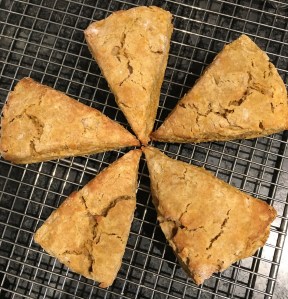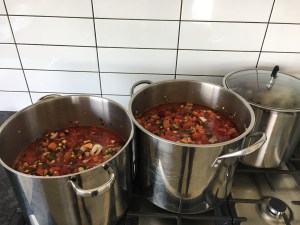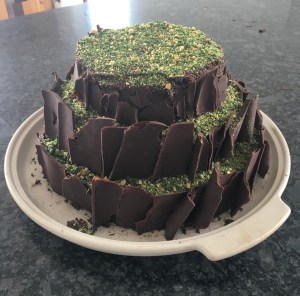As my regular readers all know, I spend a lot of time in the garden. I also spend a lot of time thinking about gardens, looking at gardens, planning gardens …
I am fortunate to be part of a local group of keen vegetable gardeners. Of course, we don’t just grow vegetables—everyone has perennial food crops like fruit trees and berry bushes, and ornamental plants as well. All of us take pleasure in planting and maintaining our gardens, as well as relaxing in and enjoying them. Some of us are in the early stages of establishing our gardens, and others have spent decades cultivating one place. But we’re all focused on the future.
I’m reminded of the quote I copied years ago from the book 1491: New Revelations of the Americas before Columbus, by Charles C. Mann:
“Gardens are fashioned for many purposes with many different tools, but all are collaborations with natural forces. Rarely do their makers claim to be restoring or rebuilding anything from the past; and they are never in full control of the results. Instead, using the best tools they have and all the knowledge that they can gather, they work to create future environments.
If there is a lesson it is that to think like the original inhabitants of these lands we should not set our sights on rebuilding an environment from the past but concentrate on shaping a world to live in for the future.”
I look at the 3000 square metres of land my husband and I own. For thousands of years, this land was covered in forest and periodically scoured by the Waimakariri River, which deposited around 300 metres of rock and clay here on top of the bedrock. When Māori arrived in the region, they burnt the forest to flush out moa and other game birds. European settlers later brought in sheep and cows and planted European pasture grasses. From the mid 1800s to 2019, our little block of land was used to pasture sheep, and later, dairy cows. When it was subdivided to develop as residential housing, the topsoil was scraped off, leaving bare, highly compacted clay studded with rocks. Even weeds grew poorly (in places where we have done nothing to improve the soil, there are still bare patches, where nothing has been able to grow in the past 5 years).
There was no restoring or remaking what was once here, but when we bought the land, we envisioned a place rich in native plants that might attract native lizards, birds and insects. We envisioned a place full of plants that would provide food—an orchard, berry crops, nuts, herbs and vegetables. We envisioned a place that was beautiful, and bright with flowers.
We cannot erase the fact that the soil here has been sorely abused for nearly two hundred years. We can’t erase the fact that we sit over an old river bed full of rock and clay. Not everything we plant flourishes, and other plants have done so well, they’ve become weeds. Some insects and birds have returned, but glaring absences remain, and non-native pests still dominate.
But like all gardeners, we look to the future, our imaginations filling the gaps in what we see today. We do our best to collaborate with the natural forces at work here in order to shape a little pocket of plenty for ourselves and others.
























